By Staff Reporters


The largest metro in the coun try and one of the conti nent’s economic hubs is, to an increasing extent, racing towards total dysfunctionality.
The City of Johannesburg has now joined other municipalities that have been declared dysfunc tional.
Traffic lights and gaping potholes go unrepaired for longer periods. Stretches of municipal roads and major arterial routes are littered with multiple yawning potholes that take forever to be repaired.
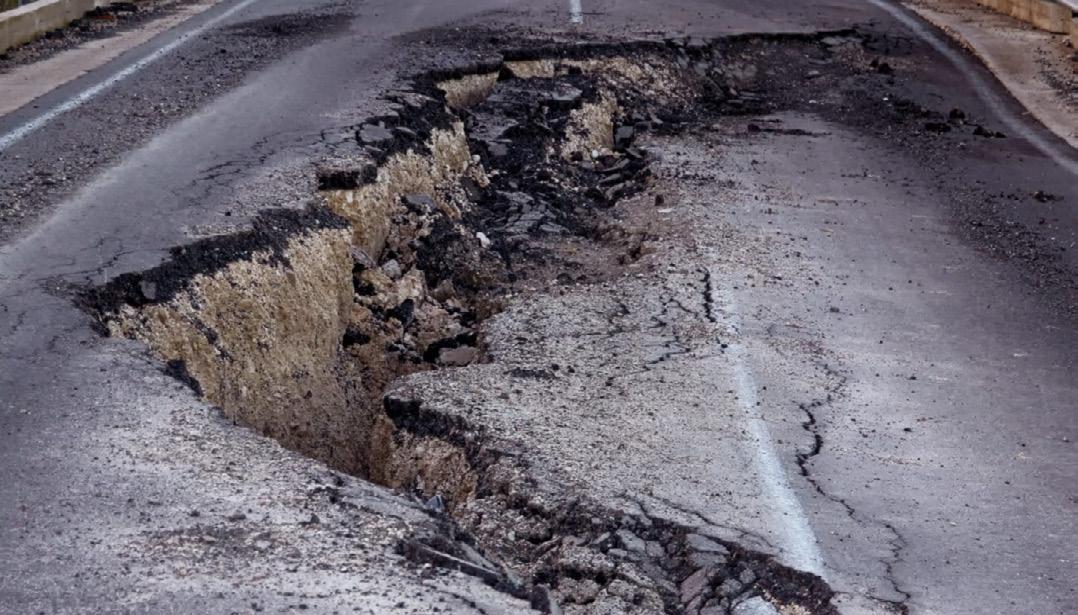
There is also the mammoth chal lenge of chronic power outages, especially after rainstorms, that can take days to be sorted out. Refuse collection, electricity and water sup ply have become inconsistent and random in some parts of the city, while in others it is a permanent feature.
In September news24.com reported that Joburg faces a mammoth task of clearing R300billion infrastruc ture backlog - with only R7.7BN
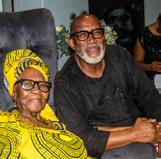
Mayor Mpho Phalatse was reported as saying a sizeable share of the capital budget of R1.2 billion had been allocated to City Power.


“City Power requires R26 bil
lion, but we can allocate a fraction of that - R1.2 billion in [capital expenditure], and R1.6 billion in [operational expenditure] - in this financial year,” Phalatse said at the time.
Nickolaus Bauer, the spokesper son for the City’s Environment and Infrastructure Service Department (EISD) told news24 : “The backlogs at the department came from City Power which needed R26 billion in infrastructure repairs, Joburg Water, which needed R20 billion, and Pik itup, which needed R700 million.
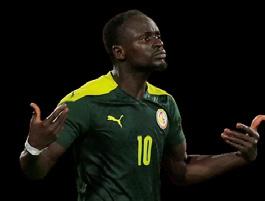

“City Power and Joburg Water need the most urgent repairs to their infrastructure, which will cost

R12 billion and R8 billion, respec tively.”
The cost of fixing the crumbling infrastructure, which has doubled since 2018, is not the only challenge faced by the city.
Financial woes continue to besiege Joburg, resulting in some service providers not being paid. As if that was not enough, there is growing concern that the salaries of the City’s employees could be affected as well.
In a statement, the ANC has con firmed it has learnt that service providers have halted their services in the City of Johannesburg due to the Democratic Alliance's (DA) poor
management of the City's finances.
"It has come to our attention that the City's fleet service provider has grounded its services due to non-payment by the City of Johan nesburg. This non-payment of ser vice providers is an unprecedented cause for concern".
These latest developments follow the revelations made by ANC JHB during a media briefing a week ago, which painted a gloomy financial outlook which signals the imminent collapse of the municipality. At the time the ANC said, the City
THEFT OF GENERATORS CAUSES MAYHEM IN FREE STATE CLINICS PAGE 3 A KWA - ZULU NATAL GOTHIC PAGE 14 “A LION CANNOT BE AFRAID” – SENEGAL SEE SPORT Story Continues on Page 2
@ telegramrsa T he Telegram ZA — SOUTH AFRICA { thetelegramlive.co.za } — MONDAY, NOVEMBER 14-30, 2022 — IN THE FACE OF AD HOMINEM TTACKS, THIS NEEDS TO BE SAID PAGE 11 The South African National Roads Agency (Sanral) says the country’s roads now have an estimated 25 million potholes — around seven million more than the estimated households IS JOBURG TITTERING ON THE BRINK OF COLLAPSE?
of Johannesburg is about to col lapse – the hands that are hold ing onto the City are on the brink of defaulting on major obliga tions such as delaying payments to major creditors.


The revenue underperformance for the financial year ended June 2022 the City’s billing for services was below budget by R3,4 billion while overspending on the pur chase of these bulk services by R342 million.
The City achieved an operat ing deficit of R1 billion against a budgeted operating surplus of R1,1 billion resulting in underper formance for the year of R2,1 bil lion. This underperformance was mainly due to a higher underper formance in revenue compared to the level of underspending in expenditure.
The City is losing a significant amount in electricity and water. In June the losses peaked at 30% and 32% respectively: an increase from 29% and 25% in June 2021. This reflects a deterioration in the management of losses as the City pays in full for these services but a significant part thereof is lost in technical and non-tech nical losses. The revenue under performance has continued in the first quarter ending October 2022 where revenue was under collected by R1,5 billion in three months.
“As the ANC in Johannesburg, we are not surprised by these disappointing developments as they serve as confirmation of our assertion that more financial woes are set to flood the City.
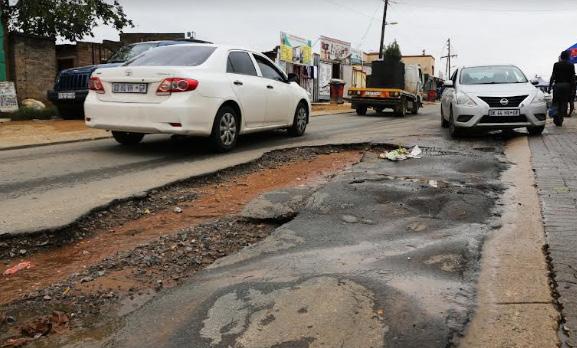
The unfortunate repercussions of these developments are that over 30 000 employees will be affected as they are likely to go unpaid in December 2022, should the City’s cash position not be urgently salvaged.
“The ANC in Johannesburg calls on Mayor Mpho Phalatse and the DA-led coalition to take full responsibility for the instabil ity in the City of Johannesburg
“It
City. This is also confirmed by an increase in the number of key municipal entities in overdraft positions, such as City Power (R8 billion), Joshco (R1,3 billion) and Metrobus (R520 million).”
Executive Mayor Mpho Pha latse’s spokesperson, Mabine Seabe strongly denied that the City was experiencing financial constraints. He also denied pay ments of salaries will be affected, curtly saying: “It’s just an ANC propaganda.”
South African Municipal Workers Union’s (Samwu) Gaut eng Provincial Treasurer, Karabo Ramahuma said they were aware that the City has financial chal lenges. However, they are just not aware of how far deep the problem is because the City is not being honest with them.
“They are not saying they have financial problems. They think we are okay when they say salaries will not be affected. It’s not only about salaries. We rely on a number of things. It means they can’t pay service providers for instance.
Therefore, they will not be able to pay people who procure tools of trade for us, like uniforms for instance.
“We thought the City should be coming out openly, so we can meet each other halfway. But should our salaries be affected, I am sure they will not be only daring Samwu but the workers.
Everybody will be in the streets. You see they have been saying we are on strike-we are not. But should they not be able to honour any of our salaries, we definitely going on strike,” Ramahuma warned.
The City’s residents are the worst hit as service delivery has been grossly affected. The ANC emphasised that, to this end, the residents of Johannesburg can forget about refuse collection, working traf fic lights, water provision and other related service delivery imperatives as the DA continues to plunge the City into deeper crisis.
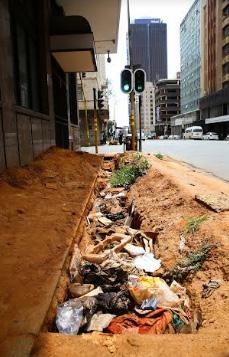
and to desist from misleading the residents of Johannesburg by hiding what is now in the public domain about service delivery and the state of City’s finances.
has also come to our attention that the payment of salaries in the City is preceded by a high level of anxiety every month due to the low level of cash available to the
2 NEWS MONDAY, NOVEMBER 14-30 CONTACT US 9 Main Road Farrarmere, Benoni, Johannesburg Published by The Telegram Media NEWS DESK +27 10 448 1108 EDITOR Themba Khumalo thembakhumalo@thetelegramlive.co.za MANAGING EDITOR Mbangwa Xaba mbangwaxaba@thetelegramlive.co.za NEWS newsdesk@thetelegramlive.co.za PRODUCTION production@thetelegramlive.co.za NEWS DESK advertising@thetelegramlive.co.za DISTRIBUTION distribution@thetelegramlive.co.za Story Continued from Page 1 Cars drive past leaking water along a street in Soweto.
by
Images
Photo
Fani Mahuntsi/Gallo
A familiar sight in Joburg CBD. Photo by Luba Lesolle/Gallo Images
WRITE ON GOGO – 90-YEARS-OLD WITH A SHARP-AS-A-RAZOR BRAIN
 By Staff Reporter
By Staff Reporter
Love is a beautiful thing, and it is at its cutest when given unconditionally by a loving parent and men tor.
Gogo Sabbath Sekoloana Thembekwayo launched her self-published book – The Brain Sharpener - Short Stories which she wrote this year as she cel ebrated her 90th birthday. The launch was held at a restaurant in Vilakazi Street, Orlando West, Soweto.

The 90-year-old former teacher said she wrote the book as an inheritance that she would like to bequeath to a genera tion of great-grandchildren as a mind-sharpening tool made of fables. She said she was sad dened by our children’s poor quality of life.
“I chose to write this book for our children because I have observed how they are engrossed by their mobile phones. It is meant to assist them to have an active mind, to have an alert mind – that is why I called it The Brain Sharpener ,” she said.
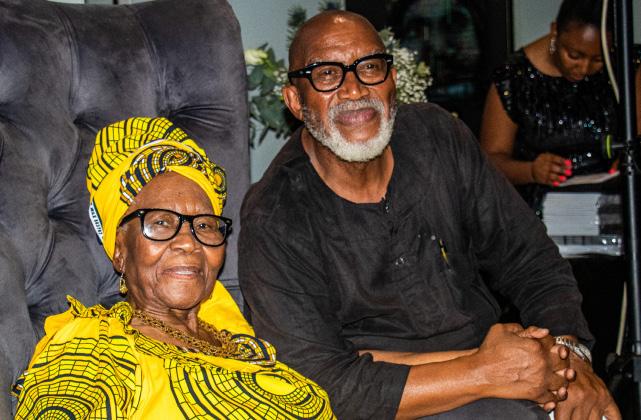
An avid reader, Gogo said she wrote the book to motivate and encourage children to enjoy reading from an early age, rather than spending so much time on their mobile phones, not even speaking to other people around them.
She said our children were indoor-bound couch potatoes who needed moral life lessons in order to give them an imag inative outlook of the world around them.
“I feel so sad when we gather as families to introduce them to one another; they would just exchange greeting ‘hi’ – ‘hi’ and that would be all. The next thing they would focus on their mobile phones, without talking to anyone. They saddens me because I know this is destroy ing them.
“Our children are a danger to themselves, they like to live a luxurious and comfortable life, and they would like to get what ever they want.
Their priorities are just skewed, they believe in short cuts, they have no respect for hard work, they are impatient, and very fragile when the going gets tough. These are our chil dren, and they need help.
“They help need is for churches, for educators, for parents, for communities to organise reading clubs, reading teams, competitions and other incentives to encourage them to read,” she said.
Gogo said the book, was a gift to children between the ages of 10 to 14 or grades 4 to six and that it is meant to assist them to deal with peer pressure when they got to high school.
It is a collection of 17 easy-toread stories packaged beautifully in 72-pages. The large font is eye friendly for young ones as it is tantalising to read.
Thembekwayo, a devout Christian, dedicated teacher, said the book would be a cher ished guidance for young chil dren; “this book is my own les sons and stories I heard from my parents as I was growing up,” she said in an elderly majestic voice.
“My mother made it a point to instil in us a sense of respon sibility by telling us about some stories in an attempt to build in us a character and good values of life. We were taught the word of God, stressing the sense of self-awareness and being well-mannered towards all human beings.
“Our minds and souls were always shaped and moulded by these fables told by elders in the family,” she wrote in a declara tion of the book.
Gogo Thembekwayo’s book launch was attended by many who’s who in the education fra ternity media including Radio 702’s Jenny Crwys-Williams.
Entertainment came from Gogo's world-famous nephew Sipho Hot Stix Mabuse who provided soothing jazz sounds. But it was his timeless hit Burn Out that got mostly senior citi zens audience to its feet dancing demanding anchors.
3 NEWS MONDAY, NOVEMBER 14-30
Gogo Sabbath Sekoloana 's world-famous nephew Sipho Hot Stix Mabuse provided soothing jazz sounds. Photo by Kelebogile Xaba
By Pamela Madonsela
A17-year-old boy is one of just over 11 000 patients on the surgery waiting list at Chris Hani Baragwanath Academic Hospital, known as Bara, after his appointment was post poned several times.
The father of Sanele Qwabe* said that his son had developed tissues on his nipples due to side effects from his treatment. His doctors then transferred him to Bara for surgery.
Back and forth Dad Xolani expressed his frustra tions from all the unreasonable ups and downs at the hospital.
“Sanele was in the Harriet Shezi ward before being transferred to plastics in January 2022, which upon their assessment, gave us another date for two months later,” said the father.
“When we arrived on the 24th of March for him to be admitted, we were told that they were only attending to emergencies. They gave us yet another date, the 14th of July,” he said. Once admitted on the given date, Xolani received a call to fetch his child because of space constraints. This was at the Bheki Mlangeni Hospital, where the operating theatres are situated.
The family is now anxiously waiting for the 30th of January 2023 to see if Sanele’s surgery will go ahead.
‘Various interventions’ Bara issued a statement at the end of August and said the long waiting list is being ‘managed through var ious interventions as part of efforts to ensure that all patients requiring surgeries are assisted accordingly.
“This was an assurance given by the Gauteng MEC for Health, Dr Nomathemba Mokgethi, when responding to a legislature ques
tion. Bara has to date 11 194 patients awaiting to undergo sur geries in various healthcare catego ries,” read the statement.
It further stated: “Various inter ventions are being used to tackle the backlogs.
These include dedicated week end surgeries, increased arthro plasty days to three days a week for hip replacement, and other joint surgeries. Further capacity will be availed once an additional theatre at the Bheki Mlangeni District Hos
pital is back online.”
Public health system ‘in a mess’
As a parent, Xolani said he feels helpless. “I am very angry; our public health system is really in a mess. Moreover, the child gets booked and at that point, his excitement gets to a certain level only to be turned away always when he’s supposed to be operated on. It’s so frustrating,” said Xolani.
The statement also highlighted insufficient capacity and the effect of the COVID-19 pandemic. Some
of the factors that lead to long wait ing times for operations include:
● The shortage of post-operative intensive care unit high-care unit beds
● Insufficient theatre times
● Infrastructure issues such as bro ken autoclaves, power outages, and dysfunctional boilers.
The COVID-19 outbreak led to the postponement of elective (planned) surgeries in the last two years as the health system was recapacitated to deal with the pan
demic.
“The facility is currently work ing around the clock to attend to as many cases as possible to significantly reduce the backlog,” the statement concluded.
Throwing punches
Xolani said his son has questioned whether the procedure will ever take place.
“Assuring him always feels like we are rolling with the punches that Baragwanath Hospital is throwing at us which is very difficult and frustrating for us as a family,” he said.
Sanele, who is a grade 11 learner, said the delay of the surgery has affected him a lot.
“I don’t feel comfortable around people because I am shy about my body and don’t want to attend camps or shower with the other boys. The surgery should’ve been done by now so that I can move on with my life. I have lost hope because every time I’m sent home,” he said.
Sanele is also worried about his scheduled surgery next January since he’ll be starting his mat ric year. He’s concerned he’ll be turned away once more.
A return to normal
“I am really hoping that it happens so that I can be comfortable again and wear my school uniform. I’m tired of people talking about me behind my back.
I am also worried that it might affect my studies next year,” explained Sanele.
His father also remains hopeful.
“I hope they come through and proceed with the operation. It has been a long process and my son being a teenager, is eager to have it done.” – Health-e News
Please note names used in the story are not real as the parents requested that we protect their child.
The Pretoria High Court has awarded R2-million in dam ages to a man detained for more than two years before charges were withdrawn.

A man accused of housebreak ing spent two years and one month in prison before charges were withdrawn.
While in jail he contracted HIV, and he was forcibly tat tooed.
The man sued the Minister of Police and was awarded R2-million by the Pretoria High Court.
By Tania Broughton
Aman accused of house breaking and detained for more than two years before charges were with drawn has been awarded R2-mil lion in damages.
Evidence was presented in the Pretoria High Court that his jail conditions were “terrible”. He contracted HIV and he was tat tooed by force by other inmates.
“He was released back to the
community with tattoos all over his body. He hates tattoos and people look at him strangely, sus piciously, thinking he is a crimi nal,” said Acting Judge Nkosingi phile Mazibuko.
The man’s identity has been withheld. He is referred to as Mr T in the judgment.
Mr T sued the Minister of Police for unlawful arrest made without a warrant in May 2015.
He appeared in court the fol lowing day and applied for bail. This was opposed by the investi gating officer and was denied by the magistrate.
He remained behind bars from 25 May 2015 until 26 July 2017 when charges were withdrawn because of lack of evidence. He was released from custody and “told to go home”.
Two police officers, Sergeant Seleke Molawa and Constable Pogiso Montwedi, testified. Mol awa said a local school principal had reported a case of theft and housebreaking. He said numerous classrooms had been broken into and items, including schoolbags and two-litre bottles containing coins had been stolen.
A community member directed the police to a house where they found two school bags and a bot tle containing coins. They were told that Mr T and others had brought them there “for sharing”.
When the police officers went to Mr T’s home, his grandmother had shown them his room where they found another bottle with coins and two school bags.
After he was arrested, Mr T told them that there were other goods under his bed and provided infor mation which led to the arrests of other suspects.
Under cross examination, Mol awa was unable to explain why there were no statements in the docket.
Montwedi gave similar evi dence and agreed that the plain tiff had volunteered information. He admitted that a police officer investigating a case was obliged to obtain a statement from all com plainants, witnesses and suspects.
Mr T, in his evidence, said his friend had brought the stolen goods to his house. He said he had been assaulted by the police when they came to his house to arrest him.
“Prior to his arrest, he lived with his grandmother, whom he adored. They were a struggling family living in poverty. He lost valuable time and opportunities in life behind bars,” Acting Judge Mazibuko said.
Mr T said the jail was dirty and overcrowded. There was violence and fighting and he was tattooed by force.
He learned he was HIV positive when he went for a surgical pro cedure while behind bars.
Clinical psychologist Mashudu Malivha testified that she had assessed Mr T and observed that he was “traumatised” by his arrest and incarceration.
She told the court he had developed severe depression and was “fatigued, suicidal and with drawn”.
Malivha said Mr T suffered from neurocognitive impairments and needed support to rebuild his life.
Acting Judge Mazibuko said there was little to link Mr T to the crime. He had given the police the goods and told them his friend had given them to him for safe keeping.
She said the police officers who
arrested him had not properly exercised their discretion and the arrest was unlawful.

“It follows then that there was no justification for his detention,” the Acting Judge said.
“No information, including the charge sheet, was placed before this court as to why the bail appli cation was opposed. The police docket was also of no assistance. The investigating officer (who opposed bail) did not testify.”
She said it seemed the investi gating officer had not attempted to get any information from either Mr T or his family before opposing bail.
Turning to quantum, Acting Judge Mazibuko said the primary purpose was not to enrich the aggrieved party but to offer some “solatium for their injured feel ings”.
“Taking all the relevant factors into account, including the living conditions in custody, the plain tiff being tattooed and contract ing HIV, as well as the period of two years and one month spent in custody … a fair and reasonable amount is R2-million,” she said.
– groundup.org.za
4 NEWS MONDAY, NOVEMBER 14-30
BARA SURGERY BACKLOG: FATHER AT A LOSS FOR WORDS MAN SPENDS
YEARS
PRISON BEFORE CHARGES
TWO
IN
DROPPED
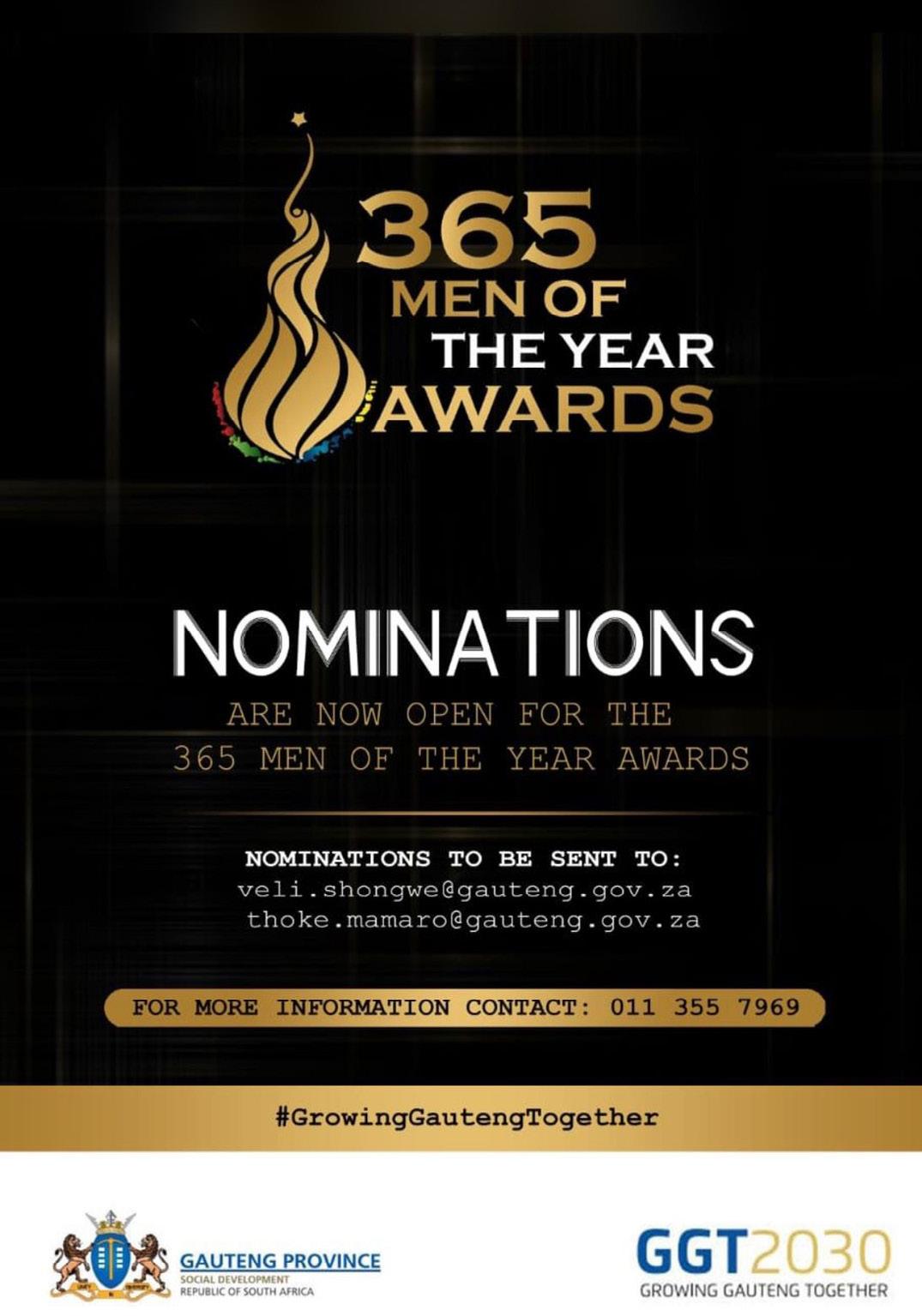

ETHIOPIA: PEACE AT LAST
By Staff Reporters
Anew era beacons for Africa as peace enters Ethio pia this November. This is momentous as Africa remains the sole continent where political violence rose even with the Ukraine-Russia war rages in Europe.
The ceasefire in the Ethiopian civil war was led by Nigerian for mer president Olusegun Obasanjo on behalf of the African Union (AU). The Ethiopian government and the Tigray People’s Liberation Front TPLF signed an agreement in Pretoria to end the two-year civil war in the country’s north province at the beginning of November.
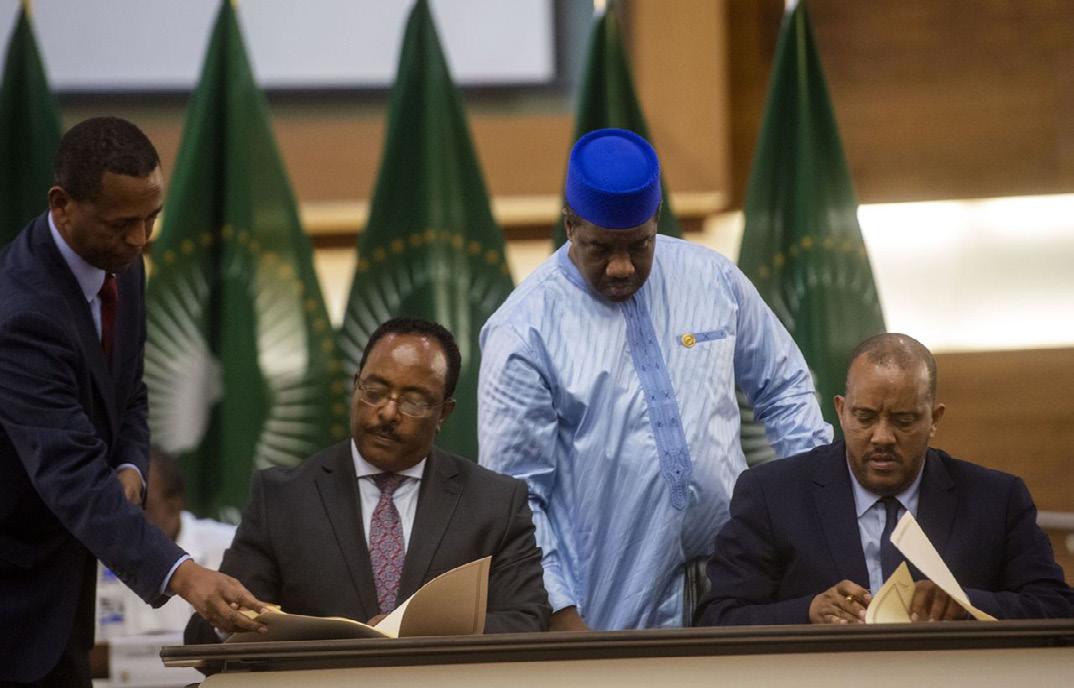
Ethiopia, Africa’s second most populous country, fell into war two years ago when the government of Prime Minister Abiy Ahmed and the leadership of the Tigray Peo ple’s Liberation Front, TPLF, failed to settle their differences amicably.
The war has claimed the lives of thousands of people, spawning one of the worst humanitarian crises in the world. It has displaced more than two million people giving rise to a wave of atrocities, including sexual violence and starvation.
The TPLF had headed the Ethio pian People’s Revolutionary Demo cratic Front, EPRDF, a coalition of four political parties which held power for 28 years.
While Ethiopia prospered under this coalition, complaints over eth no-sectional marginalisation and political repression snowballed into protests. The emergence of the Oromo People’s Democratic Organisation, OPDO’s, leader, Abiy as Prime Minister on April 2, 2018, was a major power shift that increasingly alienated the TPLF.
Abiy's formation of his Prosperity Party from remnants of the EPRDF and other parties and his adminis trative reforms effectively ousted the TPLF from power.

Besides committing to a per manent cessation of hostilities and restoration of constitutional order in terms of the November agreement, the Federal Govern ment of Ethiopia and the TPLF also announced that AU’s 2019

Transitional Justice Policy (AUTJP) would accompany the deal.
This is the first time that the AU-led peace talks have incorpo rated the AUTJP. The move, accord ing to the Ethiopian academic and political commentator Tadesse Simie Metekia “is considered vital in many peace processes, and its importance for Ethiopia has been highlighted before. The AUTJP is included to ensure accountability, truth, reconciliation and healing in post-conflict Ethiopia,” Metekia wrote on the Institute for Security Studies (ISS) website.
Metekia says including the AUTJP as a key part of the agree ment should quell concerns about accountability and justice relating to crimes committed during the war in Ethiopia.
“The AU policy is also important because Ethiopia has unsuccess fully attempted transitional justice three times in the past 50 years (in 1974, 1991 and 2018). None of these efforts was accompanied by a framework for transitional justice,” he said.
Metekia said the AUTJP was a good reference for Ethiopia for sev eral reasons including drawing on past experiences, “it acknowledges context specificity as much as it advocates for African shared values and ownership of the process by the affected country. It also clari fies the overarching purposes and guiding principles.”
Shortly after the deal was sealed, Obasanjo visited the Pan-African Parliament (PAP) at its First Ordi nary Session of the Sixth Parlia ment in Midrand, where he was piled with congratulatory praises. He called on the PAP to reclaim its power and rightful place as the voice of the African citizens at a time when the continent is dealing with numerous challenges, espe cially on the peace and security front.
“Your Committee on Cooper ation, International Relations, and Conflict Resolution should be active and at the forefront of ini tiatives involving peace-building across the continent as we try to contain instability in the face of unconstitutional changes in gov ernment. There’s a lot to do if we are to achieve peace and this body has a central role to play,” he said.
PAP president Chief Fortune Charumbira reciprocated by say ing Obasanjo’s role in Ethiopia and across the continent and his address to the PAP was historic and testaments to the Parliament’s revival.
“As Africans, we celebrate your efforts which have produced very good results in Ethiopia. As the Chief negotiator, you have deliv ered peace in that country and this is an incredible achievement. With people of your calibre, Africa is in good hands,” said Charumbira.
7 NEWS MONDAY, NOVEMBER 14-30
Ethiopian government representative Redwan Hussien and Getachew Reda of Tigray People’s Liberation Front signed a peace treaty in Pretoria. Photo by Alet Pretorius/Shutterstock
Minister for International Relations and Cooperation (South Africa) Naledi Pandor, former president of Kenya
President Uhuru Kenyatta, Ethiopian envoy Redwan Hussien, Olesegun Obasanjo former Nigerian president and African Union envoy, Tigray representative Getachew Reda and Phumzile Mlambo-Ngcuka South Africa's former deputy president. Photo by Siphiwe Sibeko/Reuters
IT IS TIME TO STOP TOYING AROUND WITH PAP
By Staff Reporters
The Pan-African Parliament (PAP) is largely ceremonial, without any legislative pow ers and is seriously under-re sourced to finance its activities let alone pay its parliamentarians, lamented PAP President, Chief For tune Charumbira.
He was speaking during the offi cial opening of the first Ordinary Session of the sixth Parliament in Midrand, South Africa.
The session was held under the African Union (AU) theme of the year, “Building resilience in nutri tion on the African continent: Accelerate the human capital, social and economic development.”
Charumbira said PAP has a criti cal role to play in ensuring that as “the continental oversight organ of the AU, it was able to follow up on the effective implementation of the policies and programmes of the Union notwithstanding the fact that a particular theme has elapsed.” He backed up his asser tion by citing Rule 4(1) of the PAP Rules of Procedure as read with Article 3(1) of the PAP Protocol which urges PAP to facilitate the implementation of the policies, objectives and programmes of the Union and oversee their effective implementation by the various organs of the Union.

He bemoaned the resource con straints hampering the progress of the institution while stating that over the past five years the insti tutional budget has been reduced by more than 50 % from USD 22 million (R391 million). It has wilted down to USD 11 million (R195 million) with USD 8 mil lion (R142 million) going towards salaries while the remaining USD 2 million (R35 million) is for pro grammes.
“In addition, there is no allo cation for fact-finding missions through which the PAP can effec tively monitor the implementation of AU policies and programmes.
The allocation to Committees is also not sufficient for a sitting let alone oversight activities and yet Committees are the engine room of any Parliament.
“We thus continue to appeal to the Union Permanent Repre
sentatives Committee (PRC) for a stouter budget which will enable us to play our role to the full and leave a legacy of a Parliament that stood for the interests of its peo ple. We must harness the positive spirit expressed by the Executive Council at the 4th Mid-Year Coor dination Summit in July 2022 to elicit support in the allocation of a stouter budget,” he said calling upon the African Union to provide the required budgetary, technical and logistical support to enable the PAP to effectively discharge its mandate as a Continental Parlia ment.
The South African government has weighed in on the matter by

saying it was aware of the chal lenges of the PAP, especially its limited legislative authority.
Speaking on behalf of President Cyril Ramaphosa, Justice and Cor rectional Services Minister Ron ald Lamola said South Africa was among member states that are keen to change the institution’s toy parliament status.

He said South Africa was seek ing to ratify the Protocol to the Constitutive Act of the African Union relating to the Pan-African Parliament adopted by the Twen ty-Third Ordinary Session of the Assembly of Heads of State and Government of the African Union, held in Malabo, Equatorial Guinea
on 27 June 2014.
The Revised Protocol, also known as the Malabo Protocol, has to be ratified by twenty-eight member states of the African Union to come into force.
But so far, only fourteen coun tries have ratified the Protocol.
“In order to strengthen the mandate of the PAP such that it becomes a legislative organ of the African Union as envisaged in the 2014 Malabo Protocol, I would like to appeal to all Parliamentarians to continue the advocacy work for the ratification of the afore-mentioned 2014 Malabo Protocol so that it may enter into force as soon as possible.”
On the Host Country Agreement (HCA), Lamola pointed out that all the obstacles that militate against the building of a permanent sec retariat had been resolved, adding that very soon, construction would soon commence at the site which will also house other AU organs and institutions in South Africa.
With all its woes, the parliament is besieged by a legacy of corrup tion and misappropriated funds. National Assembly Chief Whip of the Majority Party in South Africa, and the country’s representative at the Pan-African Parliament, has called for a forensic probe into the finances of the continental parliament.
8 NEWS MONDAY, NOVEMBER 14-30
Justice and Correctional Services Minister Ronald Lamola appealed to the PAP to continue the advocacy work for the ratification of the 2014 Malabo Protocol so that it may implemented as soon as possible.
President
of
the
African Parliament
Chief
Fortune Charumbira
said: “We are here to transform the lives of African citizenry, to achieve a better life for our women and youth, and to ensure that Africa progresses and is better for future gen erations. Africa has not done well, the PAP has not done well either, but we are saying we want to do better and as a Parliament, we have made strides in this direction.”
If your answer is yes, worry no more! The days of expensive adoption process, which can cost anything between R12000 to R20000 or more, are all gone. Government now offers a free service to qualifying Parents/Guardians who wish to adopt children. “The Gauteng Department of Social Development is leading this process in the province, and hereby wishes to inform the citizens about this new

a child a home and you are over the age of 18 years and meet the criteria, you can adopt a child.
A child is adopted when the child is placed in the permanent care of a person in terms of a court order.
The Gauteng Department of Social Development is now rendering child adoption services to prospective parents at no cost.
Purpose of adoption
a) To protect and nurture children by providing a safe, healthy environment with positive support: and
b) To promote the goals of permanency planning by connecting children to other safe and nurturing family relationships intended to last a lifetime.
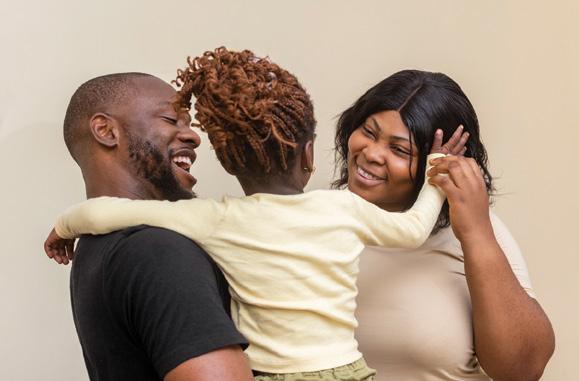
Who can be adopted?
Any child may be adopted if –
(a) The adoption is in the best interest of the child.

(b) The child is an orphan and has no guardian or caregiver who is willing to adopt the child.
(c) The whereabouts of the child’s parent or guardian cannot be established.
(d) The child has been abandoned.
(e) The child is in need of a permanent alternative placement.
(f) The child is the stepchild of the person intending to adopt.
(g) The child’s parent or guardian has consented to the adoption
Who can adopt child?
A child may be adopted –
(a) jointly by –(i) a husband and wife
(ii) partners in a permanent domestic life-partnership or (iii) other persons sharing a common household and forming a permanent family unit.
(b) a widow, widower, divorced or unmarried person.
(c) married person whose spouse is the parent of the child or by a person whose permanent life-partner is the parent of the child. (d) biological father of a child born out of wedlock or (e) foster parent of the child.
Children’s Second Amendment Act, Act No. 18 of 2016 introduced the inclusion of a Social Worker in the employ of the Department of Social Development into the definition of “Adoption Social Worker” to render adoption services. These amendments have brought forth new and certain responsibilities in terms of its implementation of Adoption as a specialty service that Social Workers in the employ of the Department of Social Development did not possess. The Child Protection Organisations and Social Workers in Private Practice were championing this service in the province.
The South African Council for Social Service Professional (SACSSP) in conjunction with National Department of Social Development and the Services for Children Directorate has ensured that the Social Workers in the Province are well capacitated and registered with the SACSSP to render the adoption services.
Adoption is a statutory process facilitated through the Children’s Court and there are strict legal procedures that promote the goals of permanency planning that connects children to nurturing family relationships intended to last a lifetime; it requires continuous monitoring, support, and it must be rendered by registered and accredited Social Service Practitioners as it is now a field of specialty.
Where can you go to apply for adoption in Gauteng?
This message is brought to you by the Gauteng Department of Social Development Growing Gauteng Together
69 Commissioner Street, Thusanong Building, Johannesburg 2107
Tel: +27(0)11 355 7600/ +27(0)11 227 0000
HAVE YOU ALWAYS WANTED TO ADOPT A CHILD AND BE A PARENT? Mbali Hlophe MEC for Social Development, Agriculture, Rural Development and Environment 1. EKURHULENI 2. JHB 3. SEDIBENG 4. WEST RAND 5. TSHWANE Ms
Ngema Ms
Kuboni Ms
Ms
Hyde Ms.
082
082
REGION NAMES CONTACT NUMBERS
are
of a prospective
Meme
Sibongile
Salaminah Mosia
Thelma
Madikubu Dolo Ms. Shadi Ngqaza Ms. Sinah Phiri Ms. Lebohang Mokoka Ms. Lolo Mohlala Ms. Ida Strydom
554 4042 066 291 4866
414 6910 082 414 6845 071 492 1062 082 469 8797 082 410 6564 079 529 4601 082 460 5830 082 331 0879
What
requirements
adoptive parent? (a) fit and proper to be entrusted with full parental responsibilities and rights in respect of the child. (b) willing and be able to undertake exercise and maintain those responsibilities and rights. (c) Over the age of 18 years. (d) Properly assessed by an adoption Social Worker
For more information, please contact our offices at 011 355 7600/ 011 227 00 00
HOW A DATA BREACH COULD SINK AN SME
 By Luis Monzon
By Luis Monzon
When it comes to report ing on cybercrime, we tend to only come across stories impacting major companies or industries.
Apart from the obvious reputa tional damage, we don’t really grasp the consequences of something like a data breach on a company and its customers.
There are no headline articles about the troubles that emerge in the wake of a data breach, some of which literally grind small and medium enterprises (SMEs) into the ground.
The media focuses on corporate giants as the only victims of cyber crime and lulls us into a false reality where data breaches seem to hap pen mostly to corporate behemoths but not the small or medium size business owners. Cybercriminals, who are often well-organised and well-resourced, launch constant attacks on data targets, probing for the weak spots. SMEs typically invest far fewer resources in cyberse curity than big corporations, which can make them a far more attractive mark to criminals, and their busi nesses far more vulnerable.
According to Dan Thornton, CEO of cybersecurity awareness training business, GoldPhish, the often false perception that “it won’t happen to us”, puts SMEs at greater risk of becoming a target for cybercrime.
He explains, “Perpetrators of these crimes are well-aware that while big companies are invest ing heavily in their cybersecurity, SMEs who also collect and store sig nificant client and customer data, aren’t taking preventative action in the same ways. It’s a myth that hackers and scammers are only interested in the big data collected by corporates or governments. SMEs who are not cyber-savvy or don’t have suitable measures in place are the easiest targets when it comes to exploitation by cybercriminals.”
There are many SMEs that col lect customer data, that includes banking, financial and tax informa
tion, contact and residential details, consumer purchasing history and even sensitive medical records, the consequences of a data breach can be dire.
Thornton says, “We all read the headlines saying that yet again mil lions of customers’ data has been breached. Shock, horror, and then that’s it. But it’s not like that. Data breaches have long-term conse quences. Many of them actually sink companies, and many expose consumers to ongoing risks.”
What happens after a data breach?
After a data breach, companies can potentially face regulatory liability

and third-party liability, but this is not the full extent of the possible damages. Cybercriminals may hold the data hostage to extort a ransom from the company, and they may also mine sufficient data to target consumers – a data breach is not an end result but a pathway to ongoing cybercrimes.
According to IBM data, by mid2022 the average cost of a data breach was R76 million, a new high record.
Thornton notes, “Reputational damage for companies that we trust with our data can be devastating, and many businesses never recover from a data breach. Companies need to take their data protection seriously and establish full visibility

of what data they’re holding, where they are storing it, and also justify why they’re holding it. In addition, they need to implement data pro tection strategies and ensure their staff are well-trained when it comes to cybersecurity. Ensuring that your employees are trained to be cyber savvy has become critical to the mission of every business, small, medium and large.”
Cybersecurity should be front of mind for all SMEs Meticulous processes governing data collection, storage and shar ing in accordance with regulations should be controlled and the fol lowing approach is recommended: Ongoing, company-wide cyberse
curity training Implementation and maintenance of proven cybersecu rity strategies
Investment in cyber insurance coverage
Cybersecurity for SMEs needs to be embedded along with all other efforts to create a secure working culture. Employees, business leaders and customers all value this. No business can afford an ‘it won’t hap pen to us’ mindset. Cybercrime is set to become the greatest security threat to all kinds of businesses, and it’s important to invest the same care in your digital assets and consumer data. Understanding the threats and knowing how to miti gate the risks is essential.
– itnewsafrica.com
10 TECH MONDAY, NOVEMBER 14-30
In the last few days, I found myself having to narrate one of the useful conversations that I had with former President Nel son Mandela.
Mandela recalled being rebuked by Reverend Kenneth Meshoe on a deeply personal matter. Members of the ANC were visibly outraged and ready to pounce on Meshoe. Painful as the rebuke was, Mandela implored ANC parliamentarians to leave Meshoe alone. He remarked that “there is nothing that Rever end Meshoe can say and do” that will take anything from him.
Mandela was spot on. That unfor tunate incident ended up saying more about Mandela’s charac ter than it did about honourable Meshoe. From time to time, we must reckon with the trials and trib ulations that life throws at us. These trials are lessons of life. Carefully handled, they can be turned into opportunities. Indeed, one cannot be a skilful pilot or great sailor without going through storms. Uncomfortable situations reveal the characters of concerned parties.
Arguably, the malicious onslaught of attacks one has had to contend with says more about the characters involved. Blatant lies, half-truths, distortions, and defamation of char acter, no matter how many times these are repeated, would take noth ing from one. If anything, one must sympathize with such characters for it takes one to be empty, bitter, and very unhappy to invest so much energy to try to assassinate other people’s lives. This is a kind that has become impervious to both truths and facts. They are beyond redemp tion and cannot help themselves.
Indeed, the laws of physics sug gest that “if people are trying to bring you down, it only means one thing; you already are above them”. Successful people are a lot more
focused on achieving their dreams than worrying about other people. Without trying to sound arrogant, it is worth stating that some of us got to where we are despite the challenges that apartheid imposed on us.
None of my detractors will take away the fact that I have a doctor ate and two master's degrees, one from Wits in Physics and one from Harvard University. Neither will they take away the fact that I am a recipient of the Senior Fulbright Scholarship and Harvard Fellow ship, and that I held visiting pro fessorships abroad. I also had the privilege to serve on a three-person Judicial Commission of Inquiry. We must always remind ourselves of the fact that it is most likely that “some people don’t like you just because your strength reminds them of their weakness. Don't let hate slow you down.”
As regards the matter involving suspended Public Protector, Advo cate Busisiwe Mkhwebane, we have adopted a posture that Martin Luther King Jr so eloquently stated. King Jr argued that “there comes a time when one must take a position that is neither safe, nor politic, nor popular, but he must take it because conscience tells him it is right.”
Elsewhere King Jr. remarked: “The ultimate tragedy is not the oppression and cruelty by the bad people but the silence over that by the good people.”
We have found ourselves embold ened by the above dicta at a time when most people have preferred sounds of silence in the midst of blatant expression of injustice. Advocate Mkhwebane is experienc ing what the ANC experienced dur ing the early years of South Africa’s democracy. Mandela observed then: “the matter has become clear that the bulk of the mass media in our country has set itself up as a force opposed to the ANC…. [and that the] majority has no choice but to rely for information and communi cation on a media representing the privileged minority.”
Fast forward, it is Mandela’s ANC that has joined forces with the media and the Democratic Alli ance in representing the interests of powerful minorities.
The protection of minority interests manifests itself glaringly through the posture of indiffer ence that the so-called civil society organisations take when it comes to Advocate Mkhwebane.

Organisations that were at the forefront in pontificating about the right to know have become deafen ingly silent when it comes to the CR 17 funding. Instead of support ing Advocate Mkhwebane’s efforts in unravelling the mystery behind these efforts, they have miracu
lously gone underground.
Disappointingly, but not surpris ingly, the judiciary has by and large also jumped on the bandwagon. None other than the Constitutional Court raised this concern. In Public Protector v Commissioner for the South African Revenue Service and Others (CCT63/20) [2020] ZACC 28; 2021 (5) BCLR 522 (CC); 2022 (1) SA 340 (CC) (15 December 2020) the apex court noted that “there appears to be a developing trend of seeking personal costs orders in most if not all matters involving the Public Protector.”
It observed that what “made one of those cases stand out was that a personal costs order was granted based on the “usual rule” that costs follow the result, with no consid eration whatsoever of special cir cumstances that justified the order. This is a far cry from the stringent test for the award of personal costs orders.”
More chillingly the Constitu tional Court noted that in one case, the High Court – in its conclusions “– has carefully selected and used epithets and particular nouns that are suited to awards of personal costs orders, but there is not a scin tilla of evidence to support those epithets and particular nouns and, therefore, the conclusions.”
The provision of services by exter nal consultants is nothing unu sual. Most institutions tend to be inwardly looking. Getting outside expertise is complementary. The determination of value is always a subjective matter. In addition, Treasury Rules allow Consultants to sub-contract. In this regard, Practice Note Number SCM 3 of 2003 points out that “consultants may associate with each other to complement their respective areas of expertise, or for other reasons. Such an association may be for
the long term (independent of any particular assignment) or a specific assignment. The "association" may take the form of a joint venture or a sub consultancy".

Contrary to what is widely par roted in the media space, the use of communication experts in liti gation is common. Courts ruled on this matter. In some cases, going as far as to suggest that communi cation between a communications consultant and lawyers is in cer tain circumstances protected by the attorney-client privilege.
In a case, Grand Jury Subpoenas, 265 F. Supp. 2d 321, 322-23 (S.D.N.Y 2003) involving the famous Martha Stewart the court held that “the ability of lawyers to perform some of their most fundamental client functions . . . would be undermined seriously if lawyers were not able to engage in frank discussions of facts and strategies with the law yers’ public relations consultants.”
The above court relied on the ear lier judgement Gentile v. State Bar of Nevada, 501 U.S. 1030 (1991. US Supreme Court Justice Kennedy’s plurality opinion in Gentile v. State Bar of Nevada argued. “An attor ney’s duties do not begin inside the courtroom door. He or she cannot ignore the practical implications of a legal proceeding for the client.
Just as an attorney may recom mend a plea bargain or civil set tlement to avoid the adverse con sequences of a possible loss after trial, so too an attorney may take reasonable steps to defend a client’s reputation and reduce the adverse consequences of the indictment, especially in the face of a prosecu tion deemed unjust or commenced with improper motives.”
Professor Seepe is the Deputy Vice-Chancellor: Institutional Sup port at the University of Zululand.

11 YOUR TAKE MONDAY, NOVEMBER 14-30
YOUR TAKE SIPHO SEEPE IN THE FACE OF AD
ATTACKS, THIS NEEDS TO BE SAID
HOMINEM
Busisiwe Mkhwebane confers with Advocate Dali Mpofu during the parliamentary inquiry into her fitness to hold office in August. Photo by Leila Dougan/ Gallo Images / Daily Maverick
Editorial
GBVF – LESS RHETORIC AND MORE ACTION, PLEASE!
The well of hope that South Africans once had in the demo cratic government has become muddy. Every time we lower the bucket, hoping to collect a few drops of hope we find dark and toxic mud.
The faith that we have used as our pillar has been fractured. The expectation that our gov ernment has the political and moral will to provide any form of solution for our challenges is dead in the murky water.
In every valley and corner of the country, loads of people have given up on the state as a protector.
Faith and hope have been obliterated by government minions who have mastered the art of obfuscation.
What a tragedy!
In 2018, President Cyril Ramaphosa organised a Pres idential Summit on Gen der-Based Violence and Femi cide (GBVF), raising the hopes of thousands upon thousands of people whose lives are a bone-chilling nightmare.
The summit came to a close with the inking of a Declara tion whose purpose was get ting government, business, labour and civil society to join forces in developing, directing and putting into effect solid initiatives to stamp out GBVF.
Signatories of the Decla ration called for a deliberate collaboration among various stakeholders and sectors with a common vision and per spective to jointly achieve the desired outcome of a National Strategic Plan on GBVF.
Writing in the foreword of the NATIONAL STRATEGIC PLAN ON GENDER-BASED VIOLENCE & FEMICIDE 2020 – 2030 document, the president preachified: “The unacceptably high levels of gender-based violence and femicide in South Africa are a blight on our national con science, and a betrayal of our constitutional order for which so many fought, and for which so many gave their lives.
“South Africa holds the shameful distinction of being one of the most unsafe places in the world to be a woman. We have amongst the highest rates of intimate partner vio lence, and recently released data from Statistics SA show that rape and sexual violence have become hyperendemic.
This is a scourge that affects us all: young and old, black or white, rich and poor, queer or cis, rural or urban. It pervades every sphere of our society.
“Women and girls are being abused, assaulted and mur dered in our country every day - at the hands of men. We are in the throes of a deep crisis that must be brought to a decisive end.”
As is always the case, gov ernment apathy and discon nectedness conspired to turn the above into rhetoric.
The Daily Maverick identi fied 10 major promises made by Ramaphosa’s administra tion on GBV since 2018 and only found two that have been noticeably fulfilled.
Pie crumbs promises were in abundance but when it came to execution the state retreated to its squabbling corner, leav ing women and children to the will of demented beasts.
This is a betrayal that had many activists fuming. The disappointment and rage were palpable at the second shindig held in Midrand on 1 Novem ber.
How could there be no rage when four years later not much progress has been made?
He preachified once more: “That is why all of us who are attending this Summit must be focused on action and results.
“We need to be critical about those areas of the National Strategic Plan in which there has been little or no progress.
“We need practical plans to correct shortcomings and weaknesses.
“This Summit must look at what is working, what is not and what is needed to make a difference.
“This is an accountability Summit.”
We find this hard to believe.
This culture of more talk and zero action has dire con sequences. This alters the way people think, behave and interact with state institutions in times of crisis.
In May, Bheki Cele, who never misses a chance to reck lessly shoot off his mouth, told us: “There are currently GBV Desks at all police sta tions across the country, these desks are manned by police members trained in GBV-re lated courses. Over 80 thou sand officers have undergone such training and are currently manning the desks.”
Cele's statement is as far from the truth as the moon is from the bottom of the ocean.
In an interview with the Daily Maverick , the spokes person of Not In My Name Themba Masango, derided the assertion that every SAPS sta tion now has GBV desks.
“It is simply not true; we deal with GBVF cases every day on the ground, and I can tell you that there are hardly any GBV desks.
“We have had to mobilise the community just to put pressure on some of the police stations to handle GBV cases with the seriousness they deserve… Victims sometimes get turned away and get told to get elders in their families to resolve their domestic [vio lence] cases as police have to prioritise other crimes which are deemed to be more serious than GBV,” Masango told the Daily Maverick
Back in December 2021, Javu Baloyi the spokesperson at Commission for Gender Equality wrote: “What com pounds the issue is the incon sistencies within our judicial system when it comes to pros ecuting GBVF cases. Perpetra tors of gender-based violence have no regard for the law because they know nothing will happen.
“The DNA test backlog must be cleared speedily, as it leads to GBV cases being thrown out of court and perpetrators walking away.
“We need a system that is functioning and putting its citizens first when it comes to GBV and other related atroc ities.”
How long will it take, or will it ever happen?
The power is in our hands as a society…governments are only good at doing nothing.
GREED AND BRUTALITY –THE BANE OF BLACK PEOPLE
Beyond the festering wounds of apartheid, South Africa is still to face a tragedy as louche and spine-chilling as the current scant regard for life, black people’s lives especially.
In this republic, no eyebrows are raised with news headlines like “over 10 000 babies are abandoned every year,” hitting the nation.
We read, nonchalantly, that the vast majority of these children were found dead.
In a similar vein, another head line shouts - “21 bodies found in an abandoned mine”- and that police say their “preliminary inves tigations suggest that the deceased were moved and placed where they were discovered, no foul play is sus pected.”


What on earth is that gibberish?
Dead people are dumped all over the show and police think it’s all normal. Could the reason be, it is black people who are deemed to be “illegal miners”, as artisan mining is referred to for purposes of crim inalising poverty, that there is a devil-may-care attitude?
Or is it because they have been designated illegal foreign nationals deserving of this despicable treat ment?
Mine deaths in democratic South Africa are particularly lamentable and ghastly. They bear all the hall marks of apartheid – South Africa’s darkest historic moment ever.
Ours is a sick society. It is stom ach-turning rot to the core. What is worse, the lavish multibillion-rand mining industry, is the dead silent oasis where the decay that has spun out of control to engulf the entire nation sprung.
Put bluntly, we must be grateful to the mining industry that ours is a nation of malevolence and muck.
Since the ‘40s, misanthropic white supremacists may have formalised apartheid in South Africa, but it is the mining industry that conceived this human misfortune in the first place.
White settlers, the original zama-zamas under the leadership of the likes of Cecil John Rhodes and Harry Frederick Oppenheimer pioneered practices that perpetuated disenfranchising of the country’s indigenous blacks.
It was at the behest of the mining industry that successive all-white governments implemented measures to simultaneously coerce black men to abandon family farms for minework, and prevented them and their families from permanently settling in urban areas.
MY TAKE
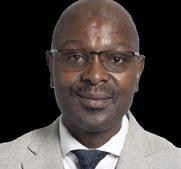 MBANGWA XABA
MBANGWA XABA
on the unsuspecting workers. They were never seen again.
Mine owners, a foreign company from Australia, Macquarie Metals, has since walked away leaving the gold mine’s business rescue prac titioners and the government to sort out its mess. In its shameful attempt to console the families, the Department of Mineral Resources has offered an insulting R200 000 compensation to the bereaved.
You would be forgiven for think ing that Marikana and the Lily Mine would be signs that would have shaken our society. If not for any thing else, just as a reality check that the mining industry doesn’t give the slightest damn about black lives and has a very scanty regard for the country's laws.
Dream on!
More cruelly, they were barred from benefiting from their toil or the country's natural resources as owners of mines themselves. They worked for next to nothing and died underground with their remains often abandoned there, others died in diseases-infested mining con ditions whilst those who were no longer useful, were sent home to be buried as paupers.
Apartheid has been wiped out in many aspects of South African soci ety – but it remains stubborn at its cradle - the mining industry.
Nothing drives this point home more than the Marikana Massacre. The mass murders at a Rustenburg town once called Rooikoppies brings the apartheid’s brutal ghost to life more vividly than any racist rant by whatever bigot. Sometimes between 12 and 16 August 2012 exactly 47 people were killed and more than 78 miners were injured.
Most of them were shot by police officers and security personnel from the Lonmin Mine armed with R5 military assault rifles.
Among the dead were 34 miners, and 10 other people including two policemen and two security guards who were killed by protesting min ers.
A mere two years later, the brutal mining industry was at it again. On February 5, 2016, Yvonne Mnisi, Pretty Nkambule and Solomon Nyirenda were swallowed by the earth whilst making a profit for the gold mine company Lily and Bar brook in Barberton, Mpumalanga. A container at the entrance of the mine where they worked caved in
To rub salt to injury, a few weeks ago, almost as if in a synchronised performance with the state, the industry turned a blind eye to the brutal gang rape of 8 women in Gauteng’s West Rand. To make mat ters worse, these women can forget about justice.
The hyped-up arrest of some 14 or so suspects, has turned out to be a miscarriage of justice and they have walked. The case is without suspects and there are very thin prospects that anyone would ever be prose cuted for this crime.
Despite the thousands that die in the abandoned mines that the min ing companies have a responsibility to seal, but chose not to, many more South Africans die in the so-called legal mines.
Actually, an ordinary day at the mines is just a deadly gamble with life for those who work there.
Mining is another world – dark, cramped, unbearably hot, the air laden with harmful dust, earth trem ors an ever-present threat, and the normal world of safety and sunlight are barely imaginable four or more kilometres above.
If nothing is done, the mayhem brought to this country by the min ing industry since the 18th-century gold rush in Johannesburg, will, it seems, persist until this beautiful land is in ruins.
Clearly, there are laws for every one else and none for the mining industry. I have said it before, maybe I should say it one more time, it is time the people of this country rise and “say this far and no further!”
Otherwise, we will perish like will ing sheep at the expense of greedy semi-human beings ransacking the underbelly of our earth for selfish interest.
12 OPINION & ANALYSIS MONDAY, NOVEMBER 14-30
Dead people are dumped all over the show and police think it’s all normal. Photo by News24
RISE OF THE REACTIONARIES
By Jason Love
It is safe to say that AfriForum has grown into one of the largest interest groups in South African society and politics. The self-pro claimed “civil rights” organisation has grown massively in recent years, from just over 9,000 members in early 2010 to more than 300,000 currently.
Originally seen as a fringe move ment concerned mainly with the rights of an Afrikaaner minority, the perception has now shifted, in large part due to the activities and publicity garnered by Gerrie Nel, the head of Afriforum’s private prosecu tion unit.

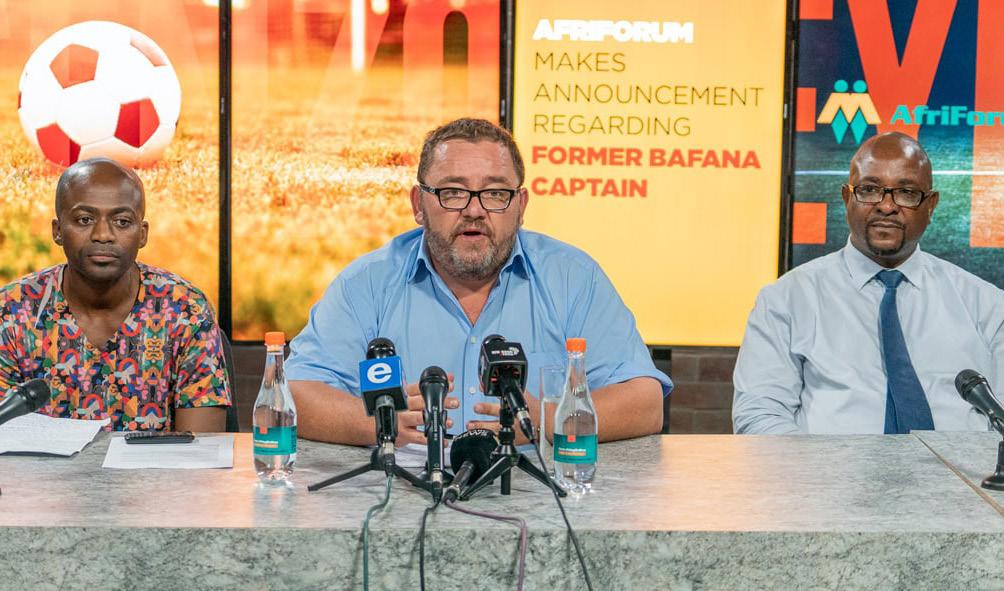
Nel and the organisation have taken on very public court cases— such as the Senzo Meyiwa murder trial—and worked hard to position themselves as fighting for the rights of minorities within the country who have been left behind.
From building a university and already producing graduates with their trade union partner, Solidarity, to fighting for clean water in Parys and even helping in the Barolong Boo Seleka royal family court case. The organisation is positioning itself in direct contrast to the ANC, a governing party that they claim has done very little but destroy.
The organisation is also active on social media. Ernst Roets, Afriforum’s deputy CEO, was recently on the Hustler’s Corner (a podcast hosted by a local celebrity DJ and gaining increasing popularity), claiming the organisation’s anti-apartheid stance, while its campaign officer, Ernst Van Zyl, has appeared on numerous local news panels, furthering the strategy to bring the group into the mainstream of the country’s politics.
However, for all their talk, Afri forum remains, at its core, a con servative, Afrikaaner-nationalist organization. It campaigns vehe mently against land redistribution without compensation, against Black Economic Empowerment and affirmative action, and against the proposed legislation to introduce National Health Insurance (NHI) to the country. A look through the petitions page on the organisation’s website reveals an expansive list of legislation and policy that it is actively opposed to or attempting to influence.
In 2021, for example, Afriforum was in court to try to force parlia ment to change the powers afforded to provincial premiers, to allow for the Western Cape premier to call an “independence referendum,” an idea that has gained significant traction in that province.
AfriForum’s rise and its attempts to "remake" itself in the political mainstream are symptomatic of a groundswell of right-wing populism in South Africa and have its roots in the 2019 national election. AfriFo rum was instrumental in the resur gence of the Afrikaaner-nationalist Vryheidsfront Plus (VF+) in the 2019 election.
Indeed, for the VF+, it was a match made in heaven with many viewing the close association with AfriForum as a signal that the party would fight for particular concerns, such as property rights, farm killings and affirmative action where other parties, such as the Democratic Alli ance (DA), were seen to be failing.
In many circles, the VF+ is viewed as the parliamentary wing of AfriFo rum, largely rooted in the same inter ests. Post-election analysis showed that many voters felt as if the DA, under the leadership of then-party
leader Mmusi Maimane, could not adequately fight for the issues that concerned them. Many white vot ers saw AfriForum take these issues to court, fight against the EFF and stand up for issues such as farm mur ders where the DA seemed lacklustre in its approach. The VF+ doubled its support in the 2019 election, growing to 2.38% from 0.90% in the 2014 national election.
The potential influence that Afri Forum wields is significant and as the organization increases its main stream credibility, it has become acceptable and even advantageous for political parties to work with the organization as a way of appealing to or drawing in lost voters or even to gain some new supporters. The DA’s burgeoning relationship with Afriforum is a good example.
In a shift in their rhetoric and under the new leadership of John Steenhuisen, the DA and AfriForum have enjoyed a much closer relation ship than before the 2019 election. In the past three years, the DA, under the leadership of John Steen huisen, has worked with Afriforum on opposition to land expropria tion without compensation, often drawing on similar talking points to oppose the amendment of the constitution.
They have also both opposed amendments to the health act, a potential policy issue that many white individuals in South Africa remain opposed to, as well as fight ing against COVID-19 restrictions.
Various other political parties, such as ActionSA and even the ANC breakaway party, Congress of the People (COPE) have all at one time or another joined hands with AfriForum on various issues. COPE supported AfriForum in its fight against land redistribution without
compensation and held joint press conferences regarding the matter.
The politics that were once seen as a fringe, right-wing reactionary type of politics have been brought to the mainstream with the issues that AfriForum talks about often entering the dominant political con versation in the country. In addition to lobbying support from political parties, AfriForum is consistently in the courts, mounting legal actions.
Recently it brought a case against Dubul’ibhunu, a popular song with roots in the anti-apartheid struggle, claiming it is tantamount to hate speech and calls for the murder of white farmers.
Another case saw Afriforum advo cating for the right to display the apartheid-era flag. The narrative of white genocide and white farm mur ders is leaned into heavily by AfriFo rum as it goes to the heart of many fears that white South Africans hold regarding race and the transition to majority rule.
Both these cases dominated the political and media conversation in the country for weeks. This resulted in many white South Africans feeling more emboldened in their beliefs. As columnist Max Du Preez noted in the local Sunday Times, “loosening the lager to join the rest of SA,” AfriForum no longer needs scare tactics to gain membership, their politics and ideals are seen to be representative of a large portion of the country’s electorate.
The rise of Afriforum and its brand of right-wing populism cannot be viewed in a vacuum. It is sympto matic of the rise of reactionary pol itics in general. Organizations such as Operation Dudula, the Patriotic Alliance (PA) and even ActionSA promote right-wing populist politics that is attempting to mobilize a coa
lition of voters around a common enemy. This has resulted in ongoing and virulent xenophobia and calls for African immigrants in particular to be expelled from the country.
In early 2022, AfriForum launched a border patrol with sniffer dogs cit ing concerns about porous borders and the number of "illegal immi grants" in the country. This feeds similar politics of Operation Dudula and the PA, intent on marshalling popular sentiment against immi grants. As poverty and unemploy ment remain entrenched charac teristics of daily life for millions of South Africans, the appeal to this type of politics is all the greater. Drawing on the failings of the ANC and many existing fears of white South Africans, AfriForum is able to position itself in direct contrast to a governing party in crisis.
AfriForum is not an isolated move ment or a fringe group. Where polit ical parties such as ActionSA and the PA have a fairly limited scope of influence on legislation, AfriForum has become a lobby group that can hold real sway over political parties in the National Assembly.
It has the power to influence vot ers and therefore the reactions of parties to issues AfriForum concerns itself with.
White minority populism is on the rise in South Africa. It represents a pattern of reactionary politics that can sew discord and divisiveness. The rise to prominence of AfriForum is a clear sign of the mainstream ing of the right-wing. To ignore or excuse it would be dangerous. – africasacountry.com
Jason Love is a master's student at the University of Pretoria research ing right-wing populism in South Africa.
13 OPINION & ANALYSIS MONDAY, NOVEMBER 14-30
AfriForum chief executive Kallie Kriel seen at a 2019 media briefing with the late Senzo Meyiwa’s brother Sifiso Meyiwa and advocate Elijah Mamabolo. Photo by Thobile Mathonsi/ANA
A KWAZULU-NATAL GOTHIC
By Christopher McMichael
From the air, the sugarcane fields of KwaZulu-Natal look like peaceful seas of verdant green. But inside is a festering night mare of carnage, as young women looking for work in factories are lured to their death by a serial killer.
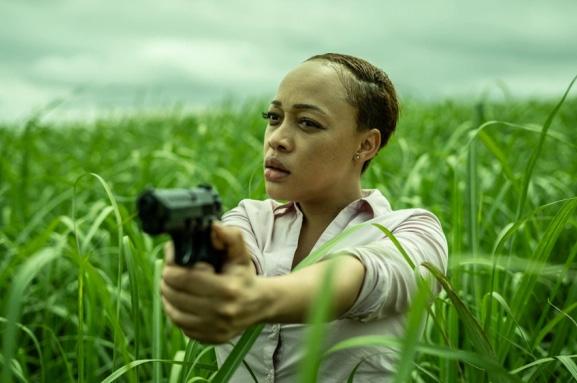
These grisly crimes are uncovered by police profiler Reyka Gama (Kim Engelbrecht), haunted by her own abduction as a child by a predatory sugarcane farmer, trapped in a claus trophobic farmhouse.
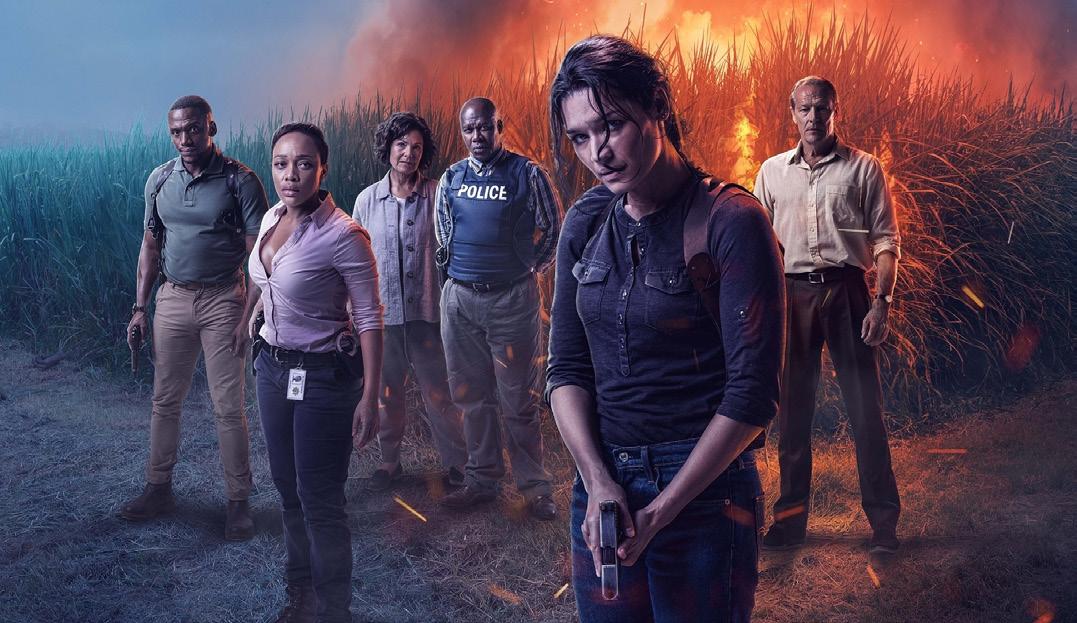
Reyka - nominated for both Best Actress (Engelbrecht) and Best Drama Series at the 2022 International Emmys - explicitly draws inspiration from real-life crimes. The murders reference Thozamile Taki, who killed 13 young women before he was appre hended.
Reyka's kidnapping in the early 1990s in Pietermaritzburg, KwaZu lu-Natal, echoes the abduction of Fiona Harvey by the apartheid-era serial killer Gert van Rooyen. The con temporary reality of organised crime and assassinations conducted by izink abi (hitmen who work for criminal syndicates within the taxi industry) is used as the narrative backdrop. A key location is clearly modelled on Glebe lands, a hostel in Umlazi (a township in Durban) with its notorious reputa tion as a haven for gunmen.
The show is a successful, often disturbing, exercise in applying the tropes of neo-noir to the South African context. The themes of troubled antihero protagonists and murders that reveal wider societal injustices and secrets have become part of interna tional narratives.
Reyka’s quietly sinister fields, omi nously shrouded in mist, parallel Memories of Murder (2003), a film by Parasite director Bong Joon Ho, about the hunt for a serial killer in rural South Korea. Narco: Mexico - the final season of which is competing in the Best Drama category of the Emmys - includes a plot about the ongoing femicides in Ciudad Juarez, where hundreds of women, often working as migrant labour in border factories,
have been killed in the last decades.
The KwaZulu-Natal depicted in the series is full of lawless, scuzzy taverns and taxi ranks where armed hoodlums lurk against an ominous soundtrack of gqom - a genre of percussive dance

music originated by bedroom pro ducers in the townships of Durban. These tropes are widely circulated in mass media, where KwaZulu-Natal is depicted as a national crime capital and the "wild west.”
Depictions go back to at least the 1980s, when the province was in a state of virtual civil war, as tensions between the African National Con gress and Inkatha Freedom Party (IFP) were deliberately manipulated by
the apartheid state. The “third force” counter-insurgency strategy fuelled intercommunal violence, state-sup ported massacres and the rise of war lords and "no-go" areas. This violence was rooted in the specific politics of
14 FEATURE MONDAY, NOVEMBER 14-30
Thando Thabethe is Nandi Cele, Hamilton Dhlamini is Hector Zwane and Anna-Mart van der Merwe is Reyka’s mother, Elsa. Photo by Showmax
the day but continued even after the 1994 elections in spirals of reprisals and vengeance.
But rather than locating it as a problem with definable contempo rary origins, media portrayals choose the more dramatic conclusion that the province was condemned to intractable violence, rooted in undy ing enmity from a social hierarchy where whites, descended from British and Irish settlers, dominated both Africans and Indians. This perspective was seen in the reportage of Rian Malan, a white South African author who built an international reputation off his best-selling book, My Traitor’s Heart Malan's reporting included an extensive focus on KwaZulu-Natal.
In a story about the trial of Simon Mpungose, known as the "Hammer man" for a series of killings where he broke into the homes of white victims, Malan reports the actions of one psychopath as conveying the truth about the province as a whole.
In highly racialized language Malan claims that the courtroom gave an illusion of civilised order. Instead, the “real KwaZulu-Natal is outside. You can hear it through the open win dow—a clamouring throng of several hundred Zulus held at bay by cops with dogs.”
This depiction of the police is espe cially ironic, as the post-apartheid Truth and Reconciliation Commis sion (TRC) revealed that apartheid-era police and the KwaZulu “homeland” forces were instrumental in facilitating and participating in political killings.
But elements of this Kurtzian dis course of horror have persisted in contemporary reporting.

Organised violence in KwaZu lu-Natal today is rooted in a political economy based around patronage and kleptocracy, where construc tion mafias and “business forums”
use force to control local markets.
Criminal violence is closely linked to power struggles within the provin cial ANC, currently dominated by a self-described “Taliban” faction.
In the aftermath of the July 2021 unrest, in which supporters of Jacob Zuma orchestrated looting and sab otage of public infrastructure as a reprisal for the former president receiving a jail sentence for contempt of court, the image of KwaZulu-Natal as an armed backwater which threat ens the stability of the rest of the country was again in circulation. In this latest version, South Africa has a “KZN problem”.
Reyka however complicates these narratives
For one, its heightened depiction of plantations and farms as quasi-gothic spaces of domination and pain shows how the poor and women are at the mercy of a wildly unequal political economy, which reproduces violence on a daily level.
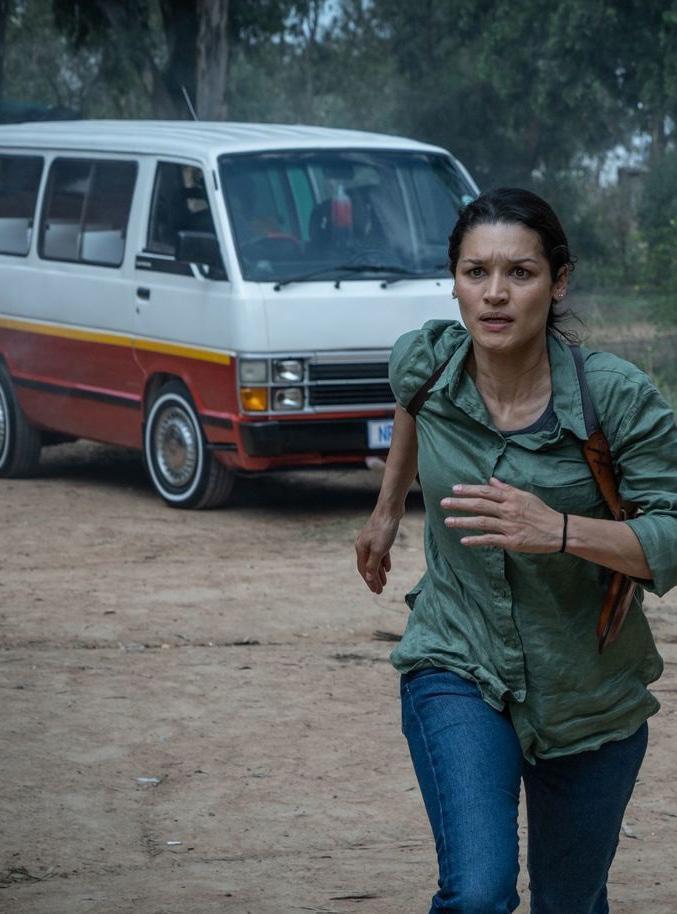
Rather than viewing this as an immutable fact of history, it depicts how these structures intersect with new struggles over control and resources. From power brokers using private security as armed militias to religious pastors abusing the trust of their followers, the series paints con temporary South Africa as a society where the ruthless pursuit of money leads to human life becoming the cheapest commodity of all.
Violence in KwaZulu-Natal is not merely localised, but also linked to wider national and global circuits of crime. Izinkabi are regularly out sourced to commit murder for hire in other parts of the country.
Rather than being an outlier, Kwa Zulu-Natal is at the forefront of the most destructive politics and social forces of the 21st century. – africasacountry.com
15 FEATURE MONDAY, NOVEMBER 14-30
Kim Engelbrecht as police profiler Reyka Gama in Reyka. Photo by Showmax
WHO LET THE BEASTS OUT?
The cage has been opened and the beasts have been unleashed.
The shrewd and daring cre ators from Wolfsburg are determined to reign on our roads by letting loose of their wildest-ever beasts. The news of the unveiling of the enraged beasts has raised the level of excitement among VW enthusiasts. Meanwhile, the competition is trembling with trepidation.

The air is thick with anxiety in the competition camps of Munich and Stuttgart as the ferocious road monsters are about to chew up the pretenders on our shores. After what felt like a lifetime of eagerly waiting to embrace the no-nonsense brutes, VW has opened the cage.
The two brutes
The VW Golf R has been refined over two decades, leading up to a sharp and swift form. As is the tradition, you will find every angle refined and cut ting-edge, delivering a visual feast that balances restraint and athleticism.
The Tiguan R with its terrain-shred ding power is proof of what it means to keep reinventing oneself. The pro gressive design is a clear illustration. From the potent proportions to the full-of-life front with its meticulous lines to the distinct shoulders, the indicative silhouette further accen tuates its strengths: ingenious power, sovereignty and hardnosed function ality.
Golf R
The Golf R has always been an excit ing product, from the first rendering in the form of R32 (MK IV) in 2002. What we know about the eight gen erations is that it rides on the same Modular Transverse Toolkit (MQB) platform as the likes of Audi A3, Audi Q2, Audi TT and VW Arteon. It uses the same EA888 2.0 TSI engine as the previous MK7 R. However, it has been reworked to produce 15KW more than the pre vious generation. The current maxi mum power output is 235. The pre vious Golf 7 R was at 221. MK 7 Golf length was 4,255mm. The current golf 8 length is 4,396. This makes it 141 mm longer than the previous generation. The previous golf 7 R was 1,763mm tall. The youngest version is 2,011mm tall. That translates to 248mm taller than Mk7.
The Golf 8 R is a bit slimmer than the Mk7, maybe because it is meant to be a mean-spirited athlete. The Golf R is an all-occasions car. You can enjoy it as a Sunday ride, as a track car and also as a refined cruiser to go on holidays. It is the only vehicle that appeals to all age groups with a bit of reluctance out of moral obligations from the above 50s. It is hearting though that the blokes from Wolfs burg have decided to bring a Tiguan R which pound for pound holds its own against the Golf 8 R.
The reworked Tsi, with a governed top speed of 270km/h will take you from 0 to 100km/h in just 4.6 sec onds. Take care though not become a guest in a police cell.
This is the same class as the BMW 240i, Bentley Continental W12, Dodge Viper GTS, Ford Mustang FR 500, Range Rover Sport SVR 5.0 V8, Lexus GS F5.0 V8, Maserati Quat troporte, Mercedes C 63 2006. This is generally a hypervelocity league which is ruled by V8s.
The contender is a mere 2.0 TSI engine. Very fuel efficient. The price has not been communicated yet, but I guess it could be a few hundred bucks shy of R1 million.
Tiguan R
The first Tiguan was launched around 2008 riding on the brilliant PQ 46 platform. It was a hit from the onset and a trendsetter. Just as we thought it
couldn’t be better, the next generation was launched in 2016. With engines ranging from 1.4 TSI to a range-top ping 2.0L TSI which is pound-forpound a Golf GTI riding on an MQB A2 platform.

As the trend is shifting from sedans to SUVs, VW left nothing to chance in the looks and comfort department. This is a highly contested market with the likes of Hyundai Tucson, Mazda CX5, Kia Sportage, Opel Crosland X, Toyota RAv4, Peugeot 3008 and many more.
It was facelifted around 2018, which left many owners of the High line spec with a lot of heartaches as their entire front was ripped out by thieves who were after the popular face-lifted bumper and lights.
Within a short space of time, just like its Polo cousin, it ruled the mar ket and became the king of SUVs.
Some vehicles appeal to male cus tomers more than females. However, the Tiguan, just like Polo and Golf, appeals to all sexes. Some moneyed households went as far as buying all three since they can't choose which is their favourite.
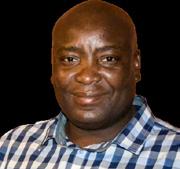

The Tiguan R is powered by the same engine that powers the golf R producing equal power of 235Kw and 400Nm Torque. It is a 4-motion all-wheel drive with an R performance Torque vectoring system. This trans lates to better handling and hot hatchlike characteristics around corners.
This monster can sprint from 0 to 100km/h in just 5.1seconds. This is insane taking into consideration that this is a family mover. This one appeals to both the youth and over 50s.
It features the same 7-speed direct shift gearbox as its younger brother
Golf. You get treated to all niceties like 20-inch Misano wheels high gloss rear diffuser, and a panoramic sunroof. It also boasts an automatic dimming rear mirror that will keep those bright lights at bay. They have thrown in Nappa leather seats with the R logo.
There is also an integrated navi gation, and Harman Kardon sound system that will shame some clubs: rear-view camera park assist, park dis tance control, IQ drive and a ton more features.
It is also equipped with an auton omous emergency braking system, just in case the driver decides to apply makeup while driving.
This baby retails for around R999 000. To sweeten the deal, there is the famous VW 3-year/120000kms warranty and 5 years of hustle-free servicing. The beasts are in town, step aside!
16 MOTORING MONDAY, NOVEMBER 14-30
RIDE ON DUMI
XABA
By Babacar Ndaw Faye
The plan
This feels as if it could be Senegal’s year, and for many observers they represent Africa’s best chance to go further than any other team in the continent (the quarter-final stage) at the 2022 FIFA World Cup in Qatar.

Nicknamed the Lions, they were crowned champions of Africa for the first time in February, and have been at the top of their game for a while now, a spell that takes in two Africa Cup of Nations finals (the other was in 2019) and qualifying for two con secutive World Cups.
There is a huge amount of confi dence flowing through the team and the expectations back home are so high that winning the tournament has not been ruled out.

Tradition in Senegal dictates that
there is a flag delivery ceremony by the president of the republic to the team before they go into a major tournament, and before the delayed 2021 Afcon in Cameroon the Senega lese head of state, Macky Sall, made a speech that seemed to motivate this team as never before.
“A lion cannot be afraid,” said Sall. “This time … we must go and take this trophy and come back, because the nation has been waiting, with hope, for so many years. With determina tion and courage, make Cameroon 2021 the time of victory.”
The words had the desired effect, and now it remains to be seen what this team can do on the world stage.
Senegal qualified for Qatar by win ning their group and then beating Egypt in a playoff.
Aliou Cissé prefers to play a 4-3-3 formation, but there are problems at left-back where Saliou Ciss, who was
outstanding at the 2021 Afcon, has been without a club since leaving Nancy in the summer.
Sadio Mané is the focal point up front, and the midfield has a strong Premier League feel to it with Nam palys Mendy (Leicester), Pape Matar Sarr (Tottenham) and Idrissa Gueye (Everton) all in contention.
The coach Aliou Cissé has been in charge since 2015 and has been key to Senegal’s rise to the top. A defensive midfielder who had more bark and bite than raw talent, as a player he featured in the team that reached Senegal’s first Afcon final in 2002 and also made it to the 2002 World Cup finals.
An assistant coach when Senegal reached their first Olympics in 2012, after he took on the top job Cissé discarded some well-known players, including Demba Ba, Papiss Cissé and
Papy Djilobodji, preferring to build the team in his own image – which meant an emphasis on courage and discipline.
He also banned hookahs and any items, including flash watches, that might be construed to indicate a lack of humility.
“We called him the dictator,” said one player anonymously. “He told us: ‘This is how I work, I let the ones who do not accept the rules leave.’”
Star player
Sadio Mané is a superhero in Senegal. For a long time, however, he went by the pejorative nickname of “Samba Alar”, which means he was considered someone who shone for his club but could not deliver for the national team. That burden increased after his missed penalty in the 2017 Afcon finals, which eliminated the team at the quarter-final stage.
But the label is history now. Mané can rightfully call himself the greatest footballer in Senegal’s history. The only current player from his country to regularly be part of the Ballon d’Or discussion, he has taken the national team to another level.
Unsung hero Unlike Sadio Mané, who was born and raised in Senegal, Boulaye Dia has dual nationality, having grown up in France. He did not join the national team until 2020 and took time to properly establish himself, mainly due to the tough competition for places up front. Now, however, he is one of the first names on the team sheet. He can play on the right or as a No 9 and, crucially, has a good understanding with Mané.
17 FEATURE MONDAY, NOVEMBER 14-30
It feels like Senegal’s year and expectations are so high back home that winning the tournament has not been ruled out…
“A LION CANNOT BE AFRAID” – SENEGAL
Story Continues on Page 18
For many observers Senegal represent Afri ca’s best chance to go further than any other team in the continent. Graphic by Fifa.com
Dia scored the first goal in the newly inaugurated national stadium in Dakar, which helped Senegal qual ify for this World Cup. He has had a good season at Salernitana in Italy’s Serie A, where he is on loan, having had mixed fortunes at Villarreal in Spain.
Recently he told La Gazzetta dello Sport that he did not have a football hero growing up because his family had no TV and therefore, he could not watch matches.
Qatar stance Not an issue in Senegal. The country has a majority Muslim population, and most people feel the discussion around Qatar’s suitability to host the World Cup has been driven by west erners keen to criticise any culture outside their own.
The players themselves have said nothing on controversial issues such as the conditions of migrant workers in Qatar.
One rare controversy was when Idrissa Gueye reportedly refused to play a game for PSG wearing a rain bow symbol on his shirt. The player
has not spoken about the incident, but his stance was supported by sev eral teammates and he received a standing ovation at his first game in Senegal after the incident. As in Qatar, homosexuality is illegal in Senegal.

National anthem Senegal’s national anthem is The Red Lion, with music from a Frenchman, Herbert Pepper, and lyrics written by Léopold Sédar Senghor, a poet, writer and politician who was the first president of the republic from 1960 to 1980. The anthem starts
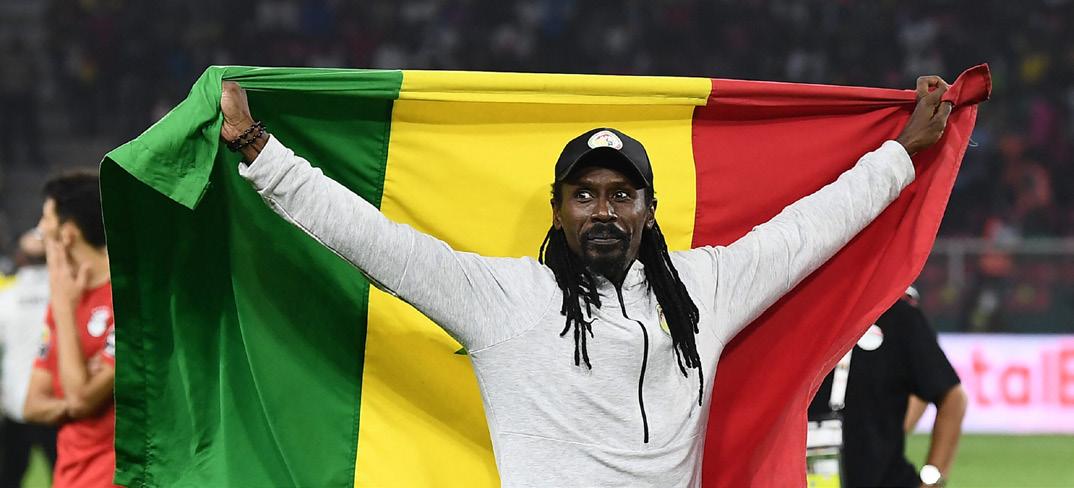
with the line “punch all your koras, hit the balafons” before continuing with “the red lion roared, the tamer of the bush” and ends on a note of African unity with: “Get up brothers, here comes Africa together again … Hi Mama Africa!”
All-time cult hero Who else but El Hadji Diouf, the superb striker from the early 2000s who played for Liverpool and Bolton, among other teams?
He is the embodiment of Senegal’s first spell of success in world football, and it is fair to say that his bad-boy
demeanour helped.
His goals allowed Senegal to reach their first World Cup finals in 2002 and he is still a hero to several of the current team, including Sadio Mané.
He continues to work with the national team as an adviser to the president of the Senegalese football federation.

When Diouf was told that Mané is now widely considered Senegal’s best ever player, he shrugged his shoul ders and said he had two African Ballons d’Or at the age of 22 “without even trying that much”.
theguardian.com
18 FEATURE MONDAY, NOVEMBER 14-30 Story Continues on Page 17
Story Continued from Page 17
Senegal’s Boulaye Dia and Mamadou Loum celebrate winning the Africa Cup of Nations in February. Photograph by Thaier Al-Sudani/Reuters
Aliou Cissé has been in charge since 2015 and has been key to Senegal’s rise to the top. Photo by Charly Triballeau /AFP/Getty Images
7. Franck Kessie – Ivory Coast
Unlike other breakout stars from Africa, Franck Kessie’s journey to the top of European club football did not begin at an early age.
The Ivorian played club football in his home country until the age of 18 before making a move to Italy with Atalanta. Once in Italy, he made his mark upon joining AC Milan where he made 223 appearances and scored 37 goals in five seasons. Kessie became a fan favourite and was found among them after scoring his last goal for the club at the end of the 2021-22 season.
When Kessie left Milan for Bar celona, it was seen as a loss for the Italian side as he played an important role in bringing Milan back to the top of Italian football.

Kessie made his Ivory Coast debut at the age of 17 and has scored seven goals in 60 international games. While he hasn’t played many big tournaments for the Elephants, he was the joint top-assist provider in the 2019 Africa Cup of Nations where his side was knocked out in the quar terfinals.
Ivory Coast’s qualification for the 2022 World Cup was on the line until their last match against Cameroon.
A win or draw would have landed the Elephants in Qatar, but they were unable to score, and a 21st-minute goal confirmed Cameroon’s qualifica tion and brought heartache for Kessie and his team.
8. Luis Diaz – Colombia
One of the biggest stars, and the joint leading goal-scorer of the 2021 Copa America, Luis Diaz has swiftly become the poster boy of Colombian football.
He has scored eight goals in 37 appearances since his international debut in 2018.
However, Diaz will not be able to put his talent on display in Qatar as Colombia failed to qualify for Qatar 2022 after finishing sixth in the CON MEBOL standings.
The 25-year-old Liverpool winger showed his despair in a Twitter post following Colombia’s last match in the qualification stage.
“Since I was little I dreamed of wearing this shirt and wearing it with pride in a World Cup.
It hurts too much not to have achieved it. I keep wanting to fight for this dream, on my part you will
have my commitment and know that I will leave everything to achieve that goal. We will have revenge.”
Diaz will have to wait another four years to see if he can live his dream.
9. Marco Verratti – Italy
Marco Verratti has been considered one of the best midfielders in the world since he was named the best player of the Italian second division in 2011-12.

He was snapped up by PSG the fol lowing season, and was swiftly named the best young player in Ligue 1.
Soon after his rise in club football, Verratti made his international debut for Italy at the age of 20, but inju ries and Italy’s poor performance in the 2014 World Cup and Euro 2016 kept him away from top international action.
Verratti was the main cog in Rob erto Mancini's midfield for Italy's tri umphant run at Euro 2020, where he finished with 93 per cent passing accuracy.
Italy’s shock defeat at the hands of North Macedonia will keep Verratti and company away from Qatar.


The 23-year-old from Lagos has quickly established himself among the top strikers in Italian football, scoring 30 goals in 68 appearances for the club since 2020. Prior to playing in Italy, Osimhen played for Wolfs burg in the Bundesliga.
The Super Eagles’ player came to the limelight for the first time when
he struck an astonishing 10 goals, six more than the second best, in the U-17 World Cup and helped Nigeria win the trophy for a record fifth time. Since his debut for the senior side, Osimhen has scored 15 goals in 22 appearances. Nigeria’s failure to qual ify for the 2022 World Cup will deny Osimhen the opportunity to put his talent on display at the biggest foot ball event. However, with age on his side, the young striker will surely have a chance of playing at another World Cup should his side qualify.
– aljazeera.com
19 SPORT MONDAY, NOVEMBER 14-30
10. Victor Osimhen – Nigeria Victor Osimhen is a promising young striker from Nigeria, a Golden Boot winner at the FIFA U-17 World Cup 2015, and the leader of Napoli’s attack in Serie A.
Gianluigi Donnarumma
David Alaba
Franck Kessie
Story Continued from Page 20
THE 10 TOP FOOTBALLERS WE WILL NOT BE SEEING AT FIFA WORLD CUP 2022
The Fifa World Cup is the big gest showcase event in foot ball.
It is expected that the game’s biggest names will put on their best performances and help their teams reach new heights while also mesmerising fans.
But some of the football world’s biggest superstars will not be plying their trade at this year’s event in Qatar that kicks off on November 20.
Of the 211 FIFA member nations, only 32 were able to book a spot at the World Cup 2022, causing heartbreak to players such as Erling Haaland, Mohamed Salah and Gianluigi Don narumma as Norway, Egypt and Italy were among the teams which failed to qualify.
Here is a list of 10 players missing from the World Cup due to their teams’ failure to qualify for the tour nament.
A special mention for Paul Pogba, who will miss France’s title defence in Qatar due to injury.
1.
Erling Haaland – Norway
Erling Haaland made his international debut at the age of 19, and has scored 21 goals in 23 matches.
However, Haaland, arguably the world’s current best young striker, could only score five goals during the World Cup qualifiers. Norway collected 18 points from its 10 qual ification matches and finished third behind the Netherlands and Turkey in the group.
The Manchester City player has been in sensational form this season, becoming the fastest player (nine games) to score 15 goals in the English Premier League.
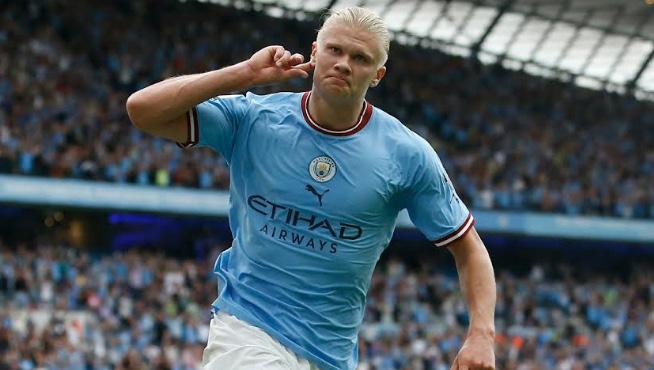
The 22-year-old has time on his side and will have plenty of oppor tunities to make up for missing out in 2022.
2. Mohamed Salah – Egypt
“I might be in Qatar during the World Cup,” Egypt’s Mohamed Salah told a television channel back in August.


However, one of the biggest stars of the football world will not be on the pitch during the Middle East’s first World Cup as his country failed to qualify for the tournament.
Egypt and Salah were on the wrong side of a penalty shootout against Sen egal twice in the space of two months.
First, they lost the Africa Cup of Nations final in February. Then came the World Cup qualification playoff, which went to a penalty shootout after two legs.
Salah’s kick from the spot sailed over the goal as Egypt lost 3-1 on penalties.
Salah’s appearance at the 2018 World Cup in Russia was hampered by injury, and he failed to take his team past the group stages.
At 30, it remains to be seen if Salah can make an attempt to play another World Cup.
3. David Alaba – Austria
David Alaba won his third Austrian sports personality of the year award this year, in addition to his eight
Despite being arguably Austria’s best footballer over the past decade, the former Bayern Munich defender has not played a World Cup as his country has not qualified for the tour nament since 1998.
The 30-year-old, who has also cap tained Austria, was part of the starting XI when his side played Wales in their Nations League playoff tie in March.
Austria’s disappointing run in the qualification process, with five wins from their 10 games, ended in a 2-1 loss in Cardiff.
The Real Madrid defender has made 96 international appearances for Aus tria and has scored 14 goals.
4. Riyad Mahrez – Algeria
Winner of the CAF African Footballer of the Year award in 2016, the Africa Cup of Nations in 2016, and the Pre mier League with two different clubs,
Riyad Mahrez has been consistently one of the best players from Africa in recent years.
The France-born winger was part of Algeria’s 2014 World Cup squad but made little impact. His team failed to qualify for the 2018 edition but were on the verge of making it to Qatar until a late Cameroon goal knocked them out in extra time of their playoff tie. Algeria’s absence in Qatar could bring an end to Mahrez’s hopes of playing another World Cup as he will be 35 in four years.
5.
Martin Odegaard – Norway
A leader on the pitch for club and country at the age of 23, Martin Ode gaard’s journey from youth to profes sional football has been swift.
The Norwegian made his profes sional league debut at the age of 15 and became the youngest goal-scorer in his country’s premier league. He was snapped up by Real Madrid a year later but kept moving between Spain and the Netherlands before finally making himself at home in London with Arsenal.
Odegaard has been regarded as one of the best young talents and it was no surprise that he broke the record for the youngest debutant for Norway's senior side at the age of 15. The mid fielder has been praised for his vision with the ball at his feet, his precision with set pieces and his ability to create space.
However, his leadership and tal ent were not enough to see his side
6. Gianluigi Donnarumma – Italy
When Gianluigi Buffon quit inter national football, Italy had little trou ble finding his successor. Not only did Gianluigi Donnarumma replace his namesake and idol with confidence, but he also established himself as the best young goalkeeper in the world.
Donnarumma made his profes sional debut for AC Milan in 2015 and cemented his place in the starting XI the following year. in 2021, he moved to Paris St-Germain.
Just as Buffon’s career was end ing, Donnarumma began establishing himself as a worthy successor. He replaced Buffon in a match in 2016, becoming the youngest goalkeeper to play for Italy at the age of 17 years.
Donnarumma was named the UEFA Player of the Tournament in the Euro 2020 championship (played in 2021) for his crucial role in helping Italy win the trophy.
Italy’s failure to qualify for yet another World Cup means that Don narumma will have to wait at least another four years before making his World Cup debut.
20 — { sportdesk@thetelegramlive.co.za} — MONDAY, NOVEMBER 14–30, 2022 — @ telegramrsa T he Telegram ZA
DARE WHEN OTHERS DON’T
Austrian Footballer of the Year awards, and the quadruple with Real Madrid in the 2021-22 season.
through to the World Cup. Norway finished third in their group. With the talent of Odegaard, Haaland and others at their disposal, it was a sur prising result.
Story Continues on Page 19
Erling Haaland
Mohammed Salah
























 By Luis Monzon
By Luis Monzon




 MBANGWA XABA
MBANGWA XABA















